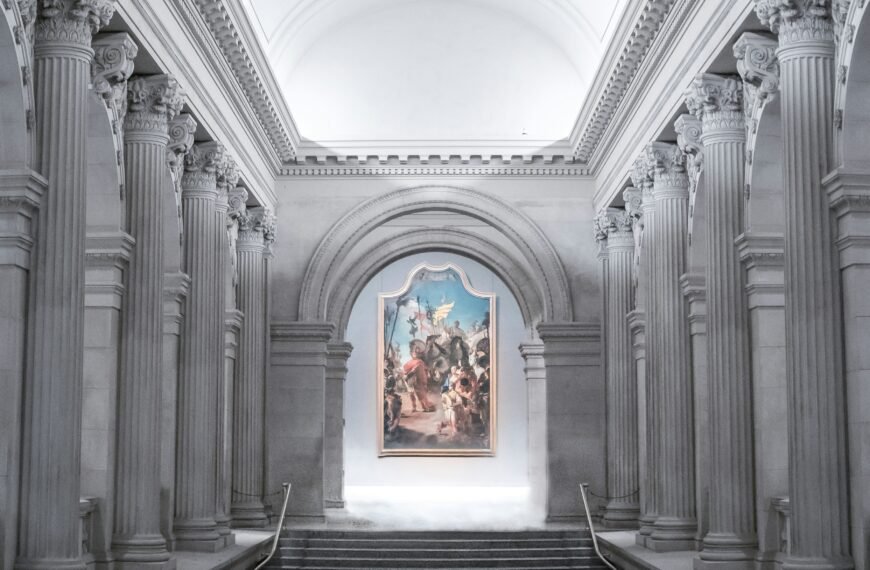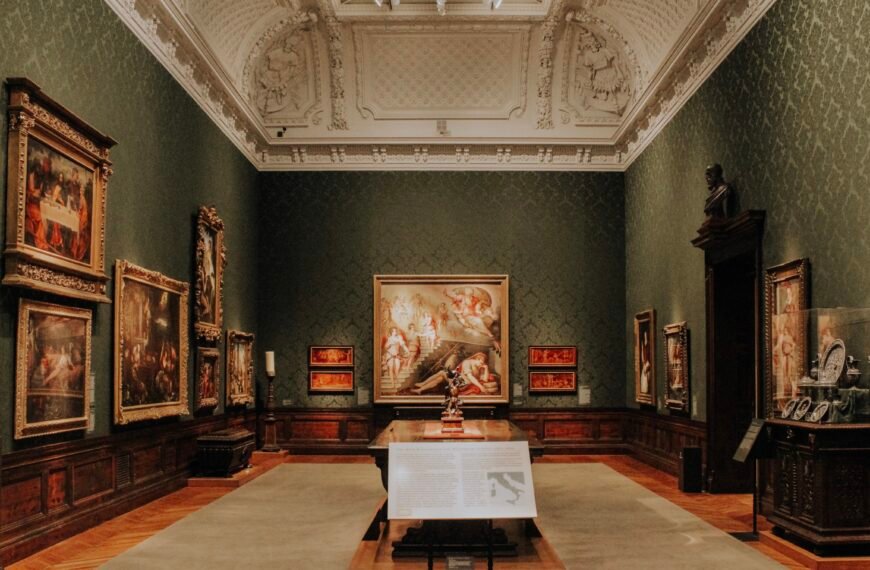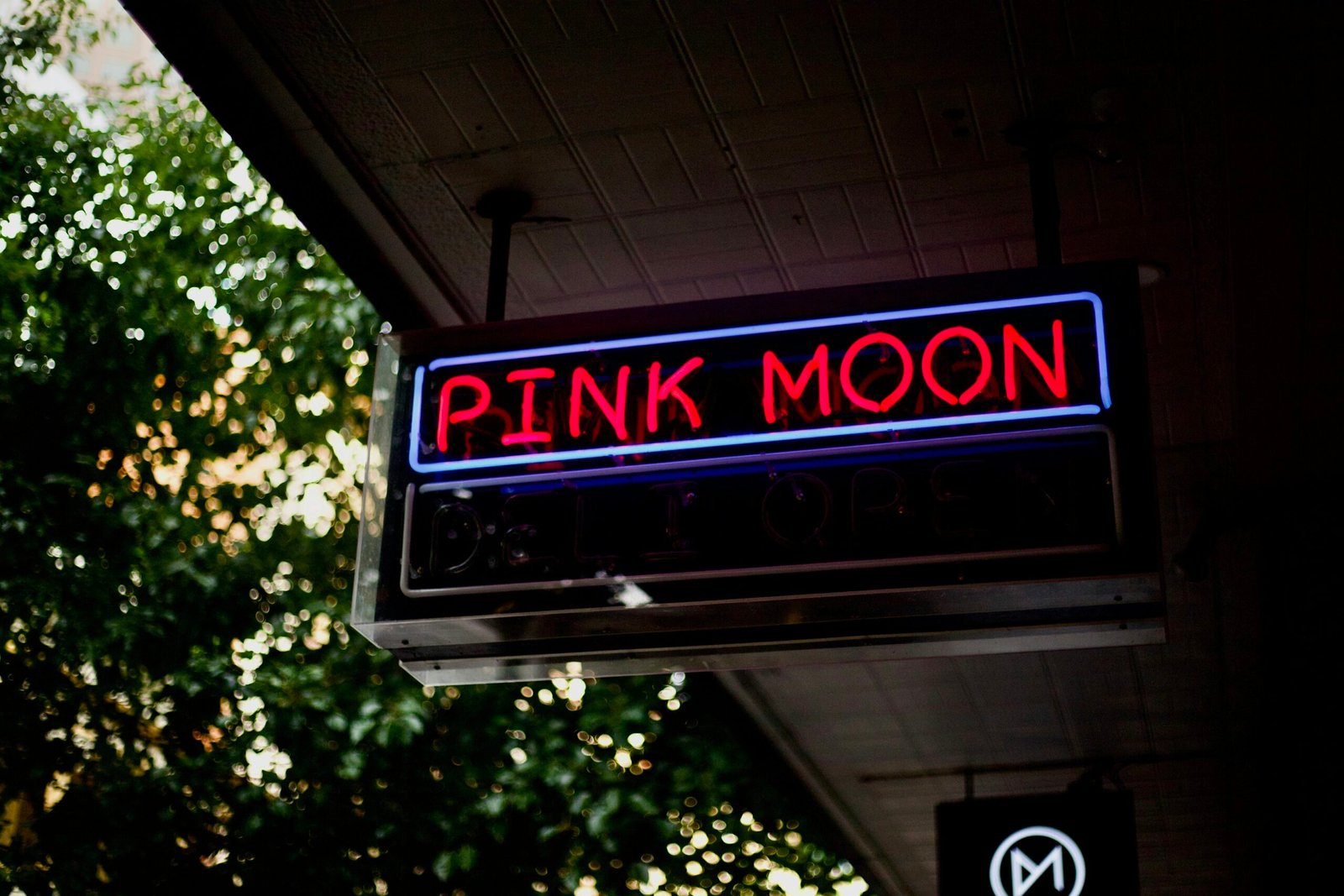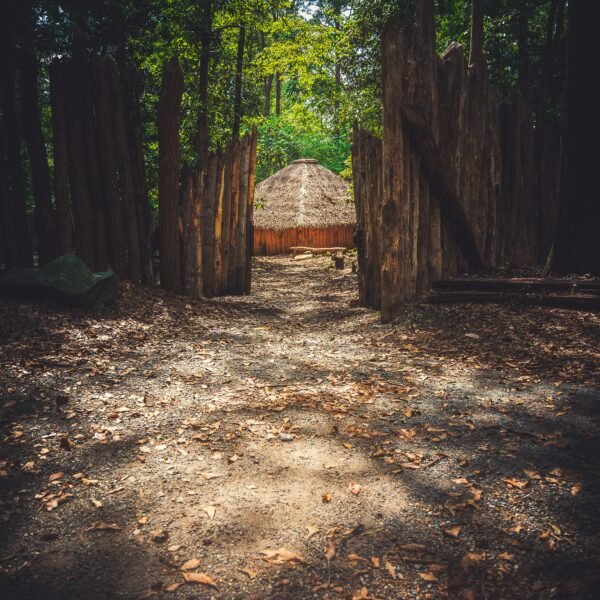You have always been intrigued by the grandeur and beauty of the Louvre Museum, marveling at its iconic structure and priceless artworks. However, you find yourself wondering about the exact location of this renowned cultural institution. In this article, we will uncover the secret behind the whereabouts of the Louvre Museum, revealing its hidden gem of a location that is bound to leave you in awe and anticipation. So, gather your curiosity and let’s embark on a journey to uncover the answer to the age-old question: “Where is Louvre Museum?”
Location of Louvre Museum
Address of Louvre Museum
The Louvre Museum is located in Paris, France. Its address is Rue de Rivoli, 75001 Paris. This famous cultural institution is situated on the Right Bank of the Seine River, in the heart of the city.
Geographical coordinates
The geographical coordinates of the Louvre Museum are 48.8606° N, 2.3376° E. These coordinates place the museum in the 1st arrondissement of Paris, making it easily accessible to visitors from all over the world.
Getting to Louvre Museum
By Metro
Taking the metro is a convenient way to reach the Louvre Museum. The closest metro stations to the museum are Palais Royal – Musée du Louvre (lines 1 and 7) and Louvre-Rivoli (line 1). These stations provide easy access to the museum entrance and allow you to explore the surrounding areas.
By Bus
If you prefer to travel by bus, there are several bus lines that stop near the Louvre Museum. Bus lines 21, 24, 27, 39, 48, 68, 69, 72, 81, and 95 all have stops in close proximity to the museum. Public transportation in Paris is well-developed, making it a convenient choice for your journey to the Louvre.
By Car
Driving to the Louvre Museum can be a bit challenging due to the heavy traffic in central Paris. However, if you decide to travel by car, the museum is easily accessible by various routes. The Rue de Rivoli and the Quai des Tuileries are major roads that provide direct access to the museum. It is important to note that parking spaces in the area can be limited, so it is advisable to use public transportation if possible.
By Bike
Paris is known for its bike-sharing system called Vélib’, which allows you to rent bicycles for short trips. There are Vélib’ stations conveniently located near the Louvre Museum, making cycling a fun and eco-friendly option. Exploring the city by bike not only allows you to enjoy the beautiful scenery but also provides easy access to the museum and nearby attractions.

History of Louvre Museum
Origins of the Louvre
The Louvre Museum has a rich history that dates back to the late 12th century. Originally, it was a fortress called the Louvre Castle, built during the reign of Philip II. Over the years, it underwent several transformations and expansions, eventually becoming the iconic museum we know today. The museum’s establishment can be traced back to the French Revolution when it was opened to the public in 1793, showcasing artwork confiscated from the nobility.
Evolution of the Louvre
Since its public opening, the Louvre Museum has undergone significant expansions and renovations to accommodate its growing collection and visitor numbers. One of the most notable expansions occurred in the 1980s when the iconic Louvre Pyramid was constructed, providing a stunning contemporary entrance to the museum. Today, the Louvre stands as a testament to the evolution of art, architecture, and culture throughout the centuries.
Architecture of Louvre Museum
Louvre Pyramid
The Louvre Pyramid, designed by renowned architect I. M. Pei, is perhaps one of the most recognizable architectural features of the museum. This glass pyramid serves as the main entrance and has become a symbol of the Louvre. Its unique design represents a harmonious blend of modernity and tradition, making it a must-see attraction for visitors.
Napoleon III Wing
The Napoleon III Wing, also known as the Richelieu Wing, is an impressive part of the Louvre Museum. It was constructed in the mid-19th century and showcases magnificent architecture from the reign of Napoleon III. Inside this wing, you can find an extensive collection of objects ranging from paintings to decorative arts.
Richelieu Wing
The Richelieu Wing is another prominent section of the Louvre Museum. This wing, built in the 17th century during the reign of Louis XIII, features exquisite architectural details that reflect the grandeur of the time. The Richelieu Wing houses a variety of galleries, including those dedicated to sculptures and decorative arts.
Denon Wing
Named after the first director of the Louvre Museum, the Denon Wing houses numerous galleries filled with artworks from different periods and regions. This section of the museum offers a diverse range of artistic styles, from classical to modern, allowing visitors to explore the vastness and richness of the Louvre’s collection.
Sully Wing
The Sully Wing, situated on the eastern side of the Louvre Museum, is a testament to the rich history of the building. This wing, constructed in the 16th century, features stunning Renaissance-style architecture. Inside, you can find a wide array of artworks, including paintings and archaeological artifacts.
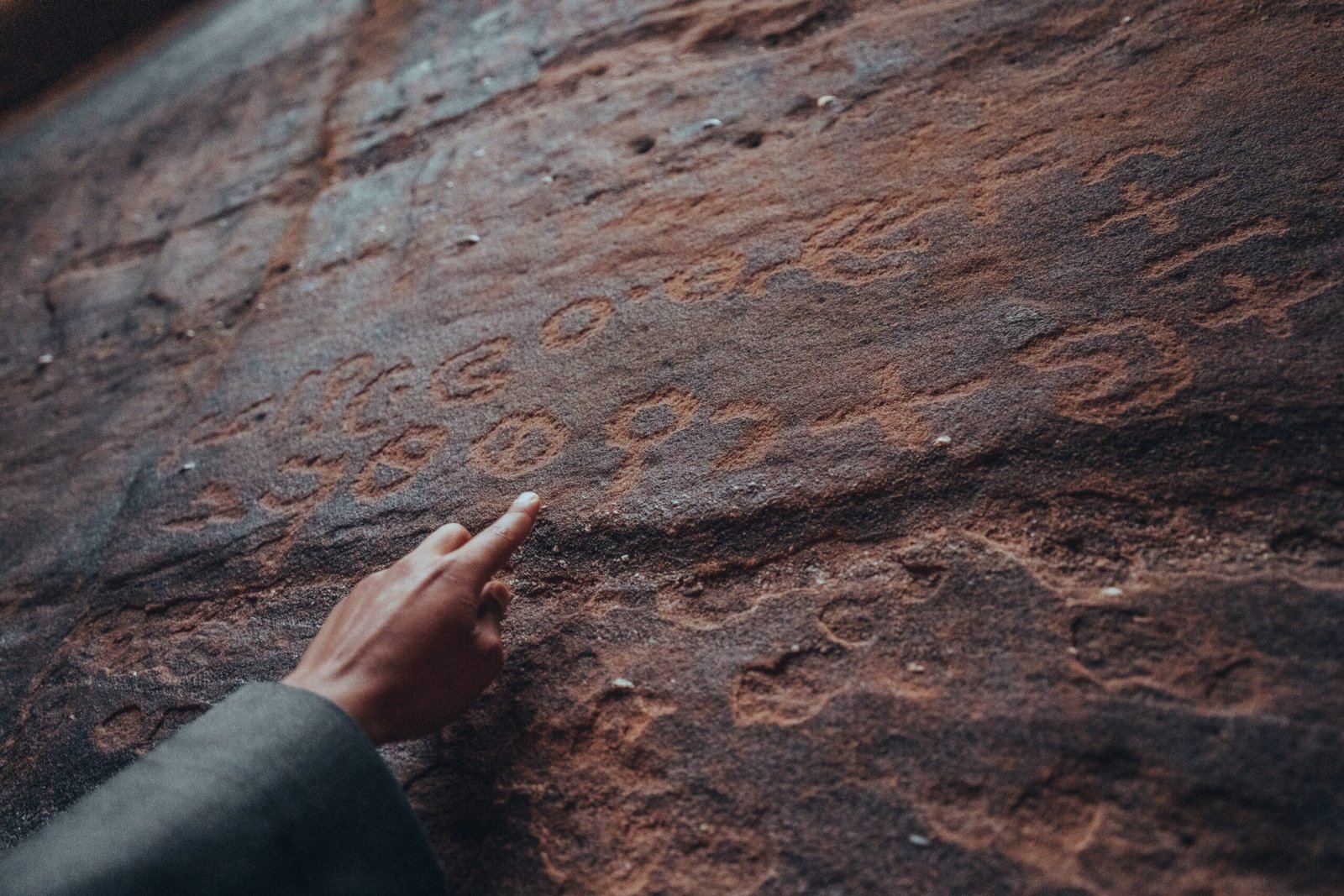
Collections at Louvre Museum
Paintings
The Louvre Museum boasts an impressive collection of paintings, ranging from ancient masterpieces to contemporary works. Among the most famous paintings housed in the museum is Leonardo da Vinci’s enigmatic “Mona Lisa,” which attracts countless visitors each year. Other notable paintings include works by Rembrandt, Vermeer, Delacroix, and many other renowned artists.
Sculptures
Sculptures hold a significant place in the Louvre’s collection, showcasing the mastery and creativity of artists throughout history. From ancient Greek and Roman sculptures, including the iconic “Venus de Milo” and the imposing “Winged Victory of Samothrace,” to Renaissance masterpieces such as Michelangelo’s “Dying Slave,” the Louvre Museum is a treasure trove for sculpture enthusiasts.
Decorative Arts
The Louvre Museum is also home to an extensive collection of decorative arts, which encompass various styles and time periods. From delicate porcelain pieces to ornate furniture, visitors can witness the intricate craftsmanship and artistic flair embedded in these exquisite objects. The museum’s collection of decorative arts truly showcases the evolution of design and aesthetics.
Egyptian Antiquities
The Louvre Museum houses an impressive collection of Egyptian antiquities, making it one of the most significant repositories of ancient Egyptian artifacts in the world. From hieroglyphic inscriptions and sarcophagi to statues of pharaohs and deities, the Egyptian section of the museum provides a fascinating insight into the rich cultural heritage of ancient Egypt.
Greek and Roman Antiquities
Another highlight of the Louvre’s collection is its extensive assortment of Greek and Roman antiquities. From meticulously crafted Greek pottery to intricate Roman mosaics, these artifacts offer a glimpse into the vibrant cultures of the ancient Mediterranean. The Louvre Museum allows visitors to explore the art and mythology of classical civilizations.
Famous Artworks at Louvre Museum
Mona Lisa
Arguably the most famous artwork in the Louvre Museum, Leonardo da Vinci’s “Mona Lisa” captivates visitors with its enigmatic smile. The painting, created during the Renaissance, is widely regarded as one of the most iconic masterpieces in the world. Viewing the Mona Lisa in person is an unforgettable experience that will undoubtedly leave a lasting impression.
Venus de Milo
The majestic “Venus de Milo” is a renowned sculpture that has fascinated art enthusiasts for centuries. Carved during the Hellenistic period, this ancient Greek masterpiece portrays the goddess Aphrodite (Venus to the Romans) in all her timeless beauty. The sculpture’s graceful posture and missing arms leave room for interpretation, allowing visitors to appreciate the artistry and elegance of the ancient world.
Winged Victory of Samothrace
Perched atop a grand staircase in the Louvre Museum, the “Winged Victory of Samothrace” commands attention with its dramatic and dynamic pose. This ancient Greek sculpture, dating back to the Hellenistic period, depicts the goddess Nike (Victory) standing on a ship’s prow. The Winged Victory of Samothrace perfectly captures the essence of movement and grace, making it a must-see for art lovers.
Code of Hammurabi
One of the oldest known deciphered legal codes, the “Code of Hammurabi” is a significant artifact housed within the Louvre Museum. Dating back to ancient Babylon in the 18th century BCE, this stone monument is inscribed with a comprehensive legal code that provides insight into the laws and social structure of the time. The Code of Hammurabi serves as a testament to the enduring importance of written laws and their impact on civilization.

Tickets and Opening Hours
Ticket Prices
When planning your visit to the Louvre Museum, it’s important to be aware of the ticket prices. The standard adult ticket price is €17, which grants you access to the museum’s permanent collection and temporary exhibitions. However, it is advisable to check the museum’s official website for up-to-date ticket prices, as they may vary depending on exhibitions or special events.
Opening Hours
The Louvre Museum is open every day, except Tuesdays, from 9:00 AM to 6:00 PM. On Wednesdays and Fridays, the museum stays open until 9:45 PM, providing an opportunity for evening visits. It is worth noting that the museum can get quite crowded, especially during peak tourist seasons, so arriving early or visiting during the extended evening hours may enhance your experience.
Free Admission Days
If you’re looking to visit the Louvre Museum on a budget, mark your calendars for the first Sunday of each month, as admission is free on these days. Additionally, visitors under the age of 18, students, and individuals with disabilities and their companions may be eligible for free or reduced-price admission. Be sure to check the museum’s official website for detailed information on eligibility and requirements.
Services and Facilities
Guided Tours
To enhance your visit to the Louvre Museum, consider joining a guided tour. The museum offers various guided tours led by knowledgeable experts who provide insightful commentary on the artworks and the museum’s history. These tours allow you to gain a deeper understanding of the collections and ensure that you don’t miss any of the must-see masterpieces.
Audio Guides
If you prefer exploring the museum at your own pace, audio guides are available for rent at the Louvre. These audio guides provide detailed information about the artworks and their historical context, allowing you to create your personalized tour of the museum. With the help of an audio guide, you can delve into the fascinating stories behind the masterpieces.
Restaurants and Cafés
After hours of exploring the vast halls of the Louvre, you may find yourself in need of refreshment. Fortunately, the museum offers a variety of restaurants and cafés where you can savor delicious meals, snacks, and beverages. From elegant dining experiences to quick bites, there are options to suit every taste and budget, ensuring you can refuel and continue your visit.
Shops
If you’re looking for a memento of your visit to the Louvre Museum or a gift for an art-loving friend, be sure to explore the museum’s shops. From art books and reproductions of famous artworks to unique souvenirs and jewelry, the shops offer a wide range of items that celebrate the Louvre’s collections. Bringing home a piece of the Louvre will allow you to cherish the memories of your visit for years to come.
Tips for Visiting Louvre Museum
Plan Ahead
The Louvre Museum is vast, and attempting to see everything in one visit can be overwhelming. Before your visit, take some time to research the museum’s collections and decide which artworks or galleries are of particular interest to you. Planning a rough itinerary in advance will help you make the most of your time and ensure you see the highlights you’re most excited about.
Avoid Crowded Times
As one of the most popular tourist attractions in the world, the Louvre Museum can get incredibly crowded, especially during peak hours. To avoid the crowds, consider visiting during weekdays or opt for the extended evening hours on Wednesdays and Fridays. Arriving early in the morning or later in the afternoon can also help you enjoy a more peaceful and relaxed visit.
Wear Comfortable Shoes
Exploring the Louvre Museum requires quite a bit of walking, so it is crucial to wear comfortable footwear. The museum covers a vast area, and you’ll likely spend several hours on your feet, admiring the artworks and exploring the galleries. Wearing comfortable shoes will ensure that your visit remains enjoyable without any unnecessary discomfort.
Follow the Rules
To ensure the preservation of the artworks and the safety of all visitors, it is crucial to follow the rules and regulations set by the Louvre Museum. Photography is generally allowed in most parts of the museum, but be sure to check for any restrictions or areas where photography is prohibited. Remember to stay respectful of the artworks and fellow visitors by speaking softly and refraining from touching the exhibits.
Conclusion
The Louvre Museum symbolizes the rich history, culture, and artistry of the world. With its central location in Paris, it attracts millions of visitors annually who come to admire its vast collection of paintings, sculptures, and antiquities. From the iconic Louvre Pyramid to the awe-inspiring masterpieces like the Mona Lisa and Venus de Milo, the museum offers an unforgettable experience that is both educational and visually stunning. Whether you’re an art aficionado or simply curious about the world’s cultural heritage, a visit to the Louvre Museum is an absolute must. So plan your trip, explore the magnificent galleries, and immerse yourself in the timeless beauty of the Louvre.


